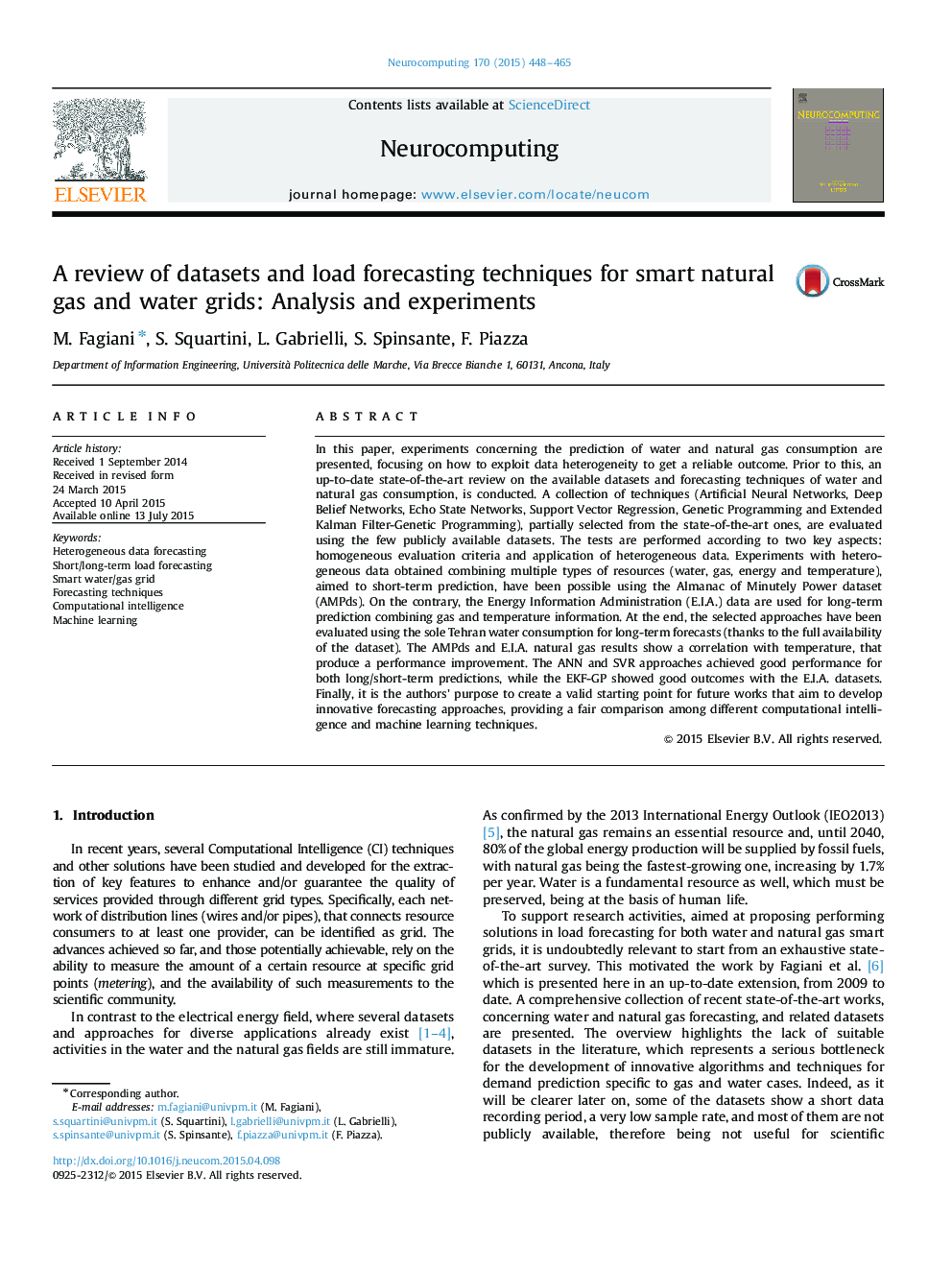| Article ID | Journal | Published Year | Pages | File Type |
|---|---|---|---|---|
| 406063 | Neurocomputing | 2015 | 18 Pages |
In this paper, experiments concerning the prediction of water and natural gas consumption are presented, focusing on how to exploit data heterogeneity to get a reliable outcome. Prior to this, an up-to-date state-of-the-art review on the available datasets and forecasting techniques of water and natural gas consumption, is conducted. A collection of techniques (Artificial Neural Networks, Deep Belief Networks, Echo State Networks, Support Vector Regression, Genetic Programming and Extended Kalman Filter-Genetic Programming), partially selected from the state-of-the-art ones, are evaluated using the few publicly available datasets. The tests are performed according to two key aspects: homogeneous evaluation criteria and application of heterogeneous data. Experiments with heterogeneous data obtained combining multiple types of resources (water, gas, energy and temperature), aimed to short-term prediction, have been possible using the Almanac of Minutely Power dataset (AMPds). On the contrary, the Energy Information Administration (E.I.A.) data are used for long-term prediction combining gas and temperature information. At the end, the selected approaches have been evaluated using the sole Tehran water consumption for long-term forecasts (thanks to the full availability of the dataset). The AMPds and E.I.A. natural gas results show a correlation with temperature, that produce a performance improvement. The ANN and SVR approaches achieved good performance for both long/short-term predictions, while the EKF-GP showed good outcomes with the E.I.A. datasets. Finally, it is the authors׳ purpose to create a valid starting point for future works that aim to develop innovative forecasting approaches, providing a fair comparison among different computational intelligence and machine learning techniques.
